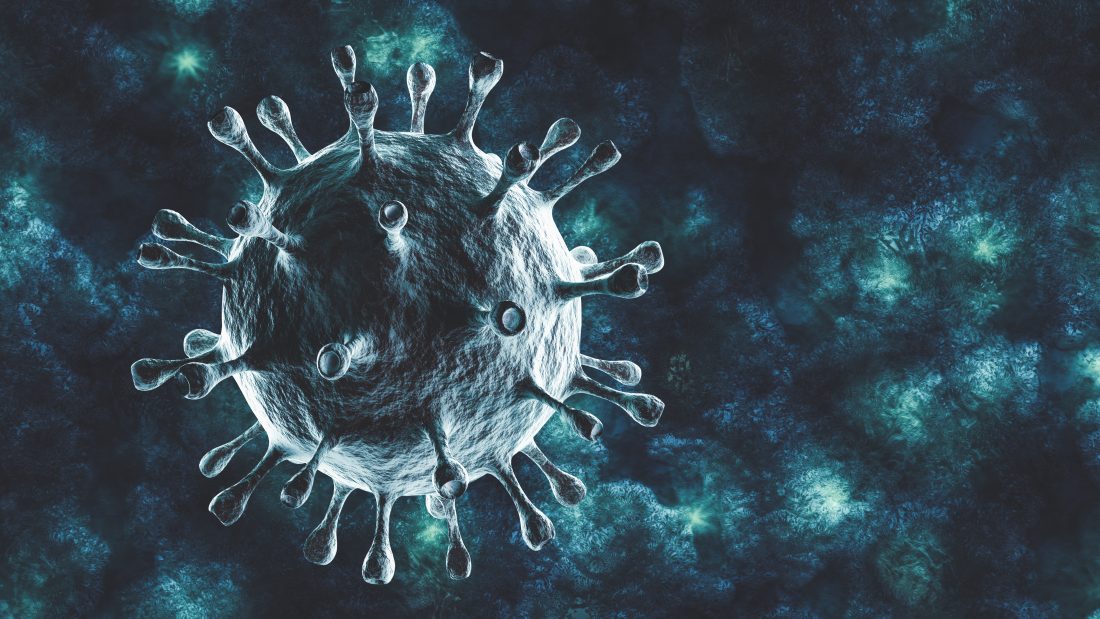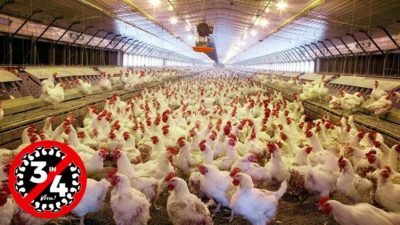10 things you didn’t know about zoonotic diseases

Zoonotic diseases are appearing with increasing frequency. Swine flu and Covid-19 emerged in recent years, others that have emerged over past decades include SARS, MERS, Ebola and HIV – they all came from animals. The Covid-19 pandemic is the worst we have seen for generations. Despite this, the threat of zoonotic diseases is still not receiving the attention it requires. Here are 10 things about zoonotic diseases that should make us completely rethink the way we treat farmed animals.
1. Zoonotic diseases cause billions of illnesses and millions of deaths each year
The World Health Organisation states that zoonotic diseases are responsible for a billion illnesses a year and researchers estimate that we can expect at least three million deaths from zoonotic diseases each year. Globally, infectious diseases account for 16 per cent of all deaths and 44 per cent of deaths in low-resource countries. According to scientists, emerging zoonoses are responsible for some of the most high profile and devastating epidemics, however, endemic zoonoses (such as mpox, previously known as monkeypox, for example) may pose a more insidious and chronic threat to both humans and animal health.
2. There are over 200 different zoonotic diseases that jump from animals to people
The World Health Organisation says there are over 200 different zoonotic diseases that jump from animals to people but there may be a lot more to come; around 1.67 million viruses are thought to exist in mammals and birds and scientists say up to half of them may have the potential to spill over into humans.
3. Three out of every four new or emerging infectious diseases in people come from animals
According to the CDC, “scientists estimate that more than six out of every 10 known infectious diseases in people can be spread from animals, and three out of every four new or emerging infectious diseases in people come from animals.”
4. Infections with zoonotic diseases may occur by direct or indirect contact
Direct infection can occur, for example, when a person comes into contact with contaminated saliva, blood, urine, mucous, faeces or other body fluids of an infected animal. This might occur when touching or handling animals or from bites or scratches. The pathogen (virus, bacteria, parasite etc) may enter the body via the inhalation of tiny respiratory droplets in the air or via the mouth, nose, eyes, open wounds, cuts or abrasions. Indirect transmission may occur when people invade or disrupt the natural habitat of animals, picking up a pathogen from contaminated objects or surfaces such as the ground or food.
5. Children, the elderly and pregnant women are most at risk
Anyone can get sick from a zoonotic disease, including healthy people. However, some people are more at risk than others. Children younger than five, adults older than 65, those with weakened immune systems and pregnant women are more likely than others to suffer severe illness and death from infection with certain zoonotic diseases.
6. Viruses are constantly evolving
Viruses are constantly evolving by mutating, mixing and matching their genes, sometimes with other viruses. A new strain of virus may be able to jump species and infect humans – like the coronavirus that caused Covid-19 – or the viruses that led to SARS, MERS, Ebola, HIV and many other zoonotic diseases.
7. Animal agriculture is to blame
Human activity and the expansion of animal agriculture to meet the world’s insatiable hunger for meat has changed three-quarters of the planet’s surface, squeezing wildlife into ever-smaller corners while large-scale factory farms expand. The intensification and expansion of animal agriculture plays a major role in pathogen emergence and is the leading cause of biodiversity loss. Factory farms provide the ideal environment for disease spillover from wild animals into livestock or for emerging viruses to mutate, take hold and spread to humans.
8. Antibiotic resistance makes zoonotic diseases even more dangerous
The overuse of antibiotics, in people and farmed animals, has led to the emergence of antibiotic-resistant superbugs. If antibiotics fail, chest infections, urinary tract infections (UTIs), cuts, insect bites and even small scratches could develop into sepsis (blood-poisoning) which can be fatal if not treated quickly. Nearly 40 per cent of E. coli infections are now resistant to antibiotics and account for a third of all sepsis cases. In the UK, five people die from sepsis every hour.
9. Almost 70 per cent of the world’s antibiotics are used in animal agriculture
Worldwide it is estimated that 66 per cent of all antibiotics are used in farm animals, not people. It’s predicted that antibiotic use in cattle, chicken and pigs worldwide will increase by eight per cent by 2030 due to the increasing global demand for meat. Colistin, described as a ‘last resort’ antibiotic for humans, is still used widely in livestock, especially pigs, in some parts of the world and in 2015, bacteria from pigs carrying colistin-resistance genes were identified in China. Colistin-resistant bacteria have now been identified in bacteria infecting farmed animals over 50 countries, including the UK.
10. All animal agriculture threatens global health
Intensive pig and poultry farming uses the greatest amount of antibiotics and therefore may carrying the highest likelihood of creating superbugs that will lead to the next pandemic. The virus responsible for the 2009 swine flu pandemic emerged from a pig farm in Mexico. However, many scientists think the next pandemic could be caused by an avian influenza (bird flu) virus emerging from a poultry farm – in the UK alone, 1.6 billion chickens are killed for food every year. While beef farming uses less antibiotics, it has a more drastic impact on climate change. The only way to reduce the risk of zoonotic diseases while also improving planetary health is to stop farming animals and go vegan.
The next pandemic could be caused by a highly pathogenic bird flu virus with the potential to kill 60 per cent of those infected. Larger than any terrorist threat! It might be an antibiotic-resistant superbug that runs riot. It could be a new mpox variant or a completely new, previously unseen virus. It might be the resurgence of an old pathogen. It’s time to make the connections between eating meat and the destruction of wildlife, antibiotic resistance and disease outbreak. It’s time to end factory farming and go vegan.
Find out more here: https://viva.org.uk/health/campaigns/3-in-4/4
Buy or download our fully-referenced report Zoonoses: a ticking time bomb here.







